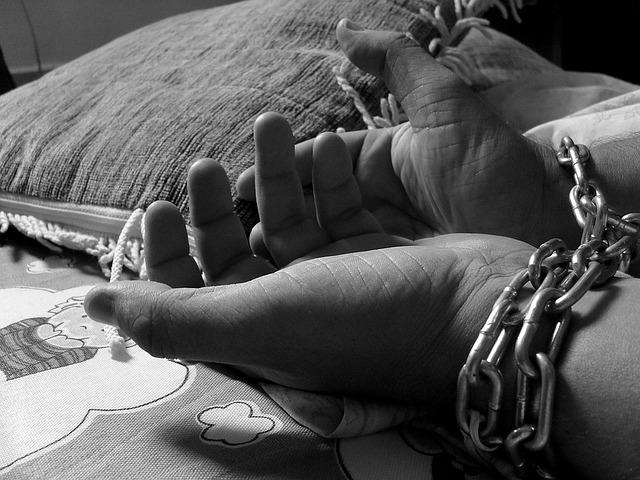Human trafficking remains a pressing and complex issue that challenges law enforcement and communities across the globe. According to the Department of Homeland Security, this modern-day form of slavery involves the illegal trade of people through coercion, fraud, or force for purposes such as forced labor or sexual exploitation. As policymakers and advocates strive to combat this pervasive crime, understanding what constitutes human trafficking is essential. This article delves into the Department of Homeland Security’s clear definition, the mechanisms behind these illicit operations, and ongoing efforts to identify and protect victims.
Understanding the Scope and Impact of Human Trafficking in the United States
Human trafficking in the United States represents a grave violation of human rights, affecting tens of thousands annually across diverse communities. It encompasses forced labor, sex trafficking, and involuntary servitude, often hidden in plain sight within industries like agriculture, domestic work, and hospitality. Victims, many of whom are vulnerable due to economic hardship, immigration status, or lack of awareness, are coerced or deceived into exploitative conditions. Recent data highlights an alarming reality: trafficking networks are both domestic and transnational, adapting rapidly to evade law enforcement efforts.
Key factors shaping the scope of trafficking in the U.S. include:
- Economic Disparities: Precarious financial circumstances push individuals into risky situations.
- Migration Patterns: Undocumented immigrants are disproportionately targeted.
- Technological Advances: Traffickers leverage online platforms for recruitment and control.
| Sector | Estimated Victims | Common Exploitation |
|---|---|---|
| Agriculture | 15,000+ | Forced labor |
| Commercial Sex | 20,000+ | Sex trafficking |
| Hospitality | 5,000+ | Labor exploitation |
Key Tactics Used by Traffickers and How Victims Are Exploited
Traffickers often rely on a range of deceptive and coercive tactics to ensnare their victims. These methods include force, fraud, and manipulation. Many victims are lured under false pretenses, such as promises of legitimate employment, educational opportunities, or a better life abroad. Once trust is established, traffickers may use threats of violence, confiscation of identity documents, or isolation from family and community to maintain control. Vulnerable populations, including migrants, runaways, and economically disadvantaged individuals, are particularly at risk. The calculated use of psychological tactics, such as inducing dependency or fear, further traps victims in exploitative situations.
- False job offers or romantic relationships as bait
- Confiscation of personal documents to restrict freedom
- Physical and emotional abuse to enforce compliance
- Isolation from support networks
- Threats against victims or their families to prevent escape
| Tactic | Purpose | Effect on Victim |
|---|---|---|
| Debt Bondage | Ensures financial control | Trapped by continuous debt |
| False Documentation | Limits legal recourse | Fear of deportation or arrest |
| Emotional Manipulation | Creates dependency | Reduced will to resist |
Victims are exploited across multiple industries, with traffickers adapting their methods to fit the specific environment. Labor trafficking victims may endure grueling work in agriculture, construction, or domestic servitude, often for little or no pay. In commercial sex trafficking, victims can be forced into prostitution, stripping, or pornography. What unites these diverse forms of exploitation is the traffickers’ relentless drive to maximize profit, disregarding the profound human suffering involved. Understanding these tactics is essential for effective intervention and victim assistance efforts.
Government Initiatives and Law Enforcement Strategies to Combat Trafficking
In recent years, the government has enhanced its commitment to dismantling human trafficking networks through a combination of robust legislative frameworks and targeted enforcement initiatives. Central to these efforts is the Trafficking Victims Protection Act (TVPA), which establishes strict penalties for traffickers and provides comprehensive support for survivors, including legal aid and access to social services. Law enforcement agencies collaborate across federal, state, and local levels to execute coordinated operations aimed at identifying and rescuing victims while apprehending perpetrators. These interagency task forces employ cutting-edge technology and intelligence-sharing platforms to disrupt human trafficking rings with greater efficiency.
Beyond enforcement, prevention and awareness are pillars of the government’s strategy. Educational campaigns and community outreach programs inform the public and vulnerable populations about the risks and signs of trafficking. Key measures include:
- Training for frontline responders, such as healthcare workers and educators, to recognize and report trafficking cases promptly
- International cooperation to target cross-border trafficking networks
- SupportśúćŚä°ÁÉ≠ÁļŅ and online resources that provide confidential assistance to victims and concerned individuals
These combined efforts contribute to a multi-dimensional approach, reinforcing the government’s resolve to eradicate human trafficking at every level of society.
Community Actions and Resources for Identifying and Supporting Victims
Communities hold a pivotal role in the fight against human trafficking. Empowering local residents, educators, and healthcare professionals with the tools to recognize signs of trafficking is crucial for early intervention. Awareness campaigns, workshops, and training sessions can cultivate vigilant neighborhoods equipped to spot red flags, such as sudden behavioral changes or unexplained absences. Collaboration between local law enforcement and community organizations further amplifies the ability to identify victims discreetly and offer immediate support.
Numerous resources are available for those looking to bolster their community’s resilience against trafficking, including hotlines, recovery programs, and legal aid. Victims benefit from specialized services that prioritize safety and confidentiality, such as trauma-informed counseling and emergency housing. Below is a quick reference guide of key community resources often activated in tandem to maximize victim assistance:
| Resource | Primary Use | Contact Info |
|---|---|---|
| National Human Trafficking Hotline | Anonymous tip reporting and victim support | 1-888-373-7888 |
| Local Law Enforcement Liaisons | Investigation and immediate protection | Varies by jurisdiction |
| Victim Advocacy Services | Counseling and legal assistance | communityorganizations.org |
Key Takeaways
In conclusion, understanding the complexities of human trafficking is essential for both policymakers and the public to effectively combat this pervasive crime. The Department of Homeland Security continues to play a critical role in identifying victims, prosecuting traffickers, and raising awareness nationwide. As efforts intensify across federal, state, and local agencies, informed citizens can also contribute by staying vigilant and reporting suspicious activity. Only through a coordinated and informed approach can we hope to dismantle trafficking networks and protect vulnerable individuals from exploitation.




